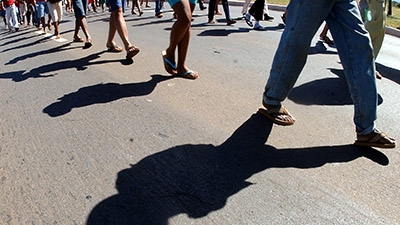Inequality has left a distinctive mark in the Latin America and Caribbean history. The gap between the rich and the poor has – for years – fueled political and social instability in a region characterized by huge reserves of natural resources and an abundant labor force.
But a little more than a decade ago, this gap began to narrow, mostly due to an unprecedented economic prosperity that lifted many families from poverty.
A World Bank study analyzes some of the concrete causes which led to a decrease in inequality, referring to a decline in the Gini index – coefficient that measures economic inequalities in a particular society – from an average of 0.530 in the late 1990’s to a 0.497 in 2010.
Out of the 17 countries for which comparable data is available, 13 registered a drop, in comparison to a Gini increase in other regions of the world.
The report focuses on three Latin American middle income countries:
- Argentina, which was the most unequal country in the region between 1970s and 1990s;
- Brazil, where significant economic progress translated into better welfare services;
- Mexico, which despite a lower economic expansion had a better performance in the international markets after joining the North America Free Trade Area (NAFTA).
More and better-paid jobs
After increasing in the 1970s and 1980s, Brazil’s Gini index reached a near historical and worldwide record: in the late 1980s, at around 0.630. Following a decade of almost no change in the 1990s, the inequality coefficient started declining steadily in 1998.
Later, from 2002 to 2009, the income of the bottom 10% grew at 7% per year – nearly three times the national average –, while that of the richest 10% grew only at 1.1% a year. During this period, Brazil’s population benefited from better-paid jobs, from cash conditional transfer programs, and from higher spending in basic education.
The study authors stress that in Brazil labor income contribution accounted (from 2006 on) for the largest share of inequality decline. Still, they also acknowledge the expansion of initiatives such as Benefício de Prestação Continuada (a transfer to the elderly and disabled) and Bolsa Família (a program in which poor families receive a monthly stipend per child attending school, up to a maximum of three children).
The latter, which currently reaches 13.8 million families, compensates poor households for schooling costs, thus curbing dropout and child labor.
Education is the answer
Brazil, Argentina, and Mexico’s successes may be hard to sustain, however. According to the study, the global crisis threatens the economic growth and foreign trade in these countries.
Investing in high quality education for all can be key to protecting local labor markets, as well as social and economic achievements, say the authors. “The decline in inequality cannot be taken for granted. It requires ‘hard work’ both from policymakers and the polity.”

